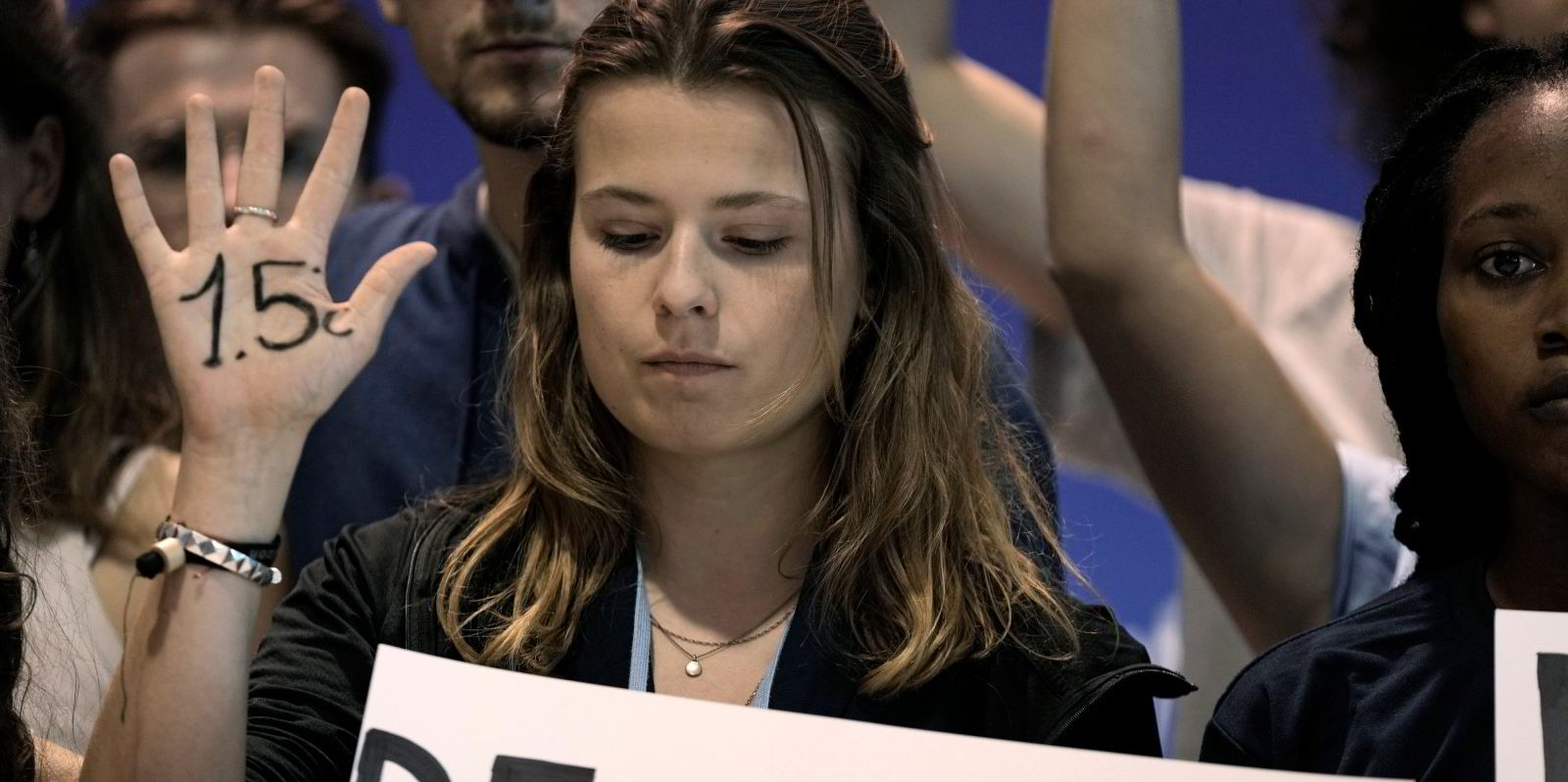The new decarbonisation targets by the International Maritime Organization have been widely criticised for adopting a trajectory that is not aligned with capping global temperature rises at 1.5C.
But research in a forthcoming whitepaper by consultancy UMAS has found that the UN shipping regulator’s targets are “very close” in practice, according to principal consultant Nishatabbas Rehmatulla.
He said the goals correspond to a trajectory towards capping climate change at 1.6C at the minimum targets set by the IMO, or 1.55C at the maximum carbon cuts that the new decarbonisation strives for.
“When you crunch the numbers, the IMO’s revised strategy is a significant leap in terms of ambition, it very closely aligns with some of the science-based targets,” Rehmatulla told TradeWinds. “And so there is much closer alignment in terms of ambition for the sector.”
In July, the IMO’s Marine Environment Protection Committee adopted a new target of net zero by around 2050 for the shipping industry, with “indicative checkpoints” calling for 20% to 30% greenhouse gas emissions reductions in 2030 and 70% to 80% cuts in 2040, relative to 2008 levels.
Several countries had been seeking cuts in line with the non-profit Science-Based Targets initiative by calling for 37% reductions in 2030 and 96% 10 years later, while environmental groups wanted even deeper cuts.
Even though the UMAS research found that IMO’s targets may already seem close to the 1.5C goal of the Paris Agreement on climate change, that is not to say that it is enough.
Rehmatulla, who is also a principal research fellow at University College London’s UCL Energy Institute, said the fractions of a degree matter when it comes to preventing damage wrought by climate change.
“It does make a difference to climate-vulnerable nations, who are really on the verge of facing these catastrophic impacts, because of this fraction of a degree — because of the sea level rise,” he told TradeWinds.

The whitepaper will contend that if the IMO strengthens its ambition at the next review in 2028 by ensuring a 30% reduction two years later and zero emissions in 2040 — 10 years before the current IMO target — the trajectory will be in line with a 1.5C pathway.
But it will take more than targets to ensure shipping follows any trajectory.
At the IMO, Rehmatulla said that means rapid action on policy measures. The body is currently considering market-based measures, which effectively means putting a price on carbon, and a fuel standard that will gradually tighten limits on the greenhouse gas intensity of the energy powering shipping.
The problem with not moving quickly is that the longer the IMO waits, the sooner shipping will have to reach zero emissions in order to keep its carbon budgets within a trajectory aligned with the 1.5C goal of the Paris Agreement, he said.

And when the IMO set its first target in 2018, calling for a 50% reduction by the middle of the century, Rehmatulla said the policy measures it enacted did not live up to its ambition.
“There is a possibility that you could face that situation again for these midterm measures,” he said. “And then you would have to end up ratcheting up those midterm measures. What that does is really lose your time when you really don’t have it.”
The Paris Agreement on climate change set a goal to limit “the increase in the global average temperature to well below 2C above pre-industrial levels” and pursue efforts “to limit the temperature increase to 1.5C”.
That limit is not far away. The 2023 report of the UN’s Intergovernmental Panel on Climate Change found that at 1.1C above pre-industrial levels today, the world is already seeing the impacts of climate change in the form of extreme weather, heatwaves, glacial retreat and rises in sea levels.
Those impacts increase with every fraction of a degree.
For example, at an average global rise of 1.5C, heatwaves are expected to occur at 4.1 times the frequency of pre-industrial temperatures and they are forecast to be 1.9C hotter. At 2C, those heatwaves are 5.6 times more frequent and 2.6C hotter.
But the whitepaper will contend that shipping’s transition has never been about just the IMO. It will call for shipping to avoid being complacent and to factor in the IMO strategy’s new targets, and for companies to develop decarbonisation strategies built on all levers of transition, not just the IMO and future regulation.
There is more pressure for shipping companies to follow a 1.5C-aligned pathway, and industry leadership efforts that are ambiguous about doing so increasingly risk being labelled as greenwashing.
The whitepaper, whose executive summary will be unveiled at London International Shipping Week on Monday, will also point to a key role for national and regional governments, calling for actions to kickstart decarbonisation in the crucial period between 2027 and 2028 or for measures to decarbonise domestic fleets. Rehmatulla said those measures should also factor in an equitable transition, to reduce economic burdens on vulnerable nations.
UMAS will also highlight that green corridors, agreed in 2021 by a coalition of countries signing the Clydebank Declaration that called for setting up low- and zero-emissions routes between key ports, need to move more quickly.
“The Clydebank Declaration, which is coming to its second anniversary, really needs to come up with some ambitious operationalisation of those green corridors by 2025 — latest 2026,” Rehmatulla said.
Read more
- Podcast: Is maritime ready to climb EU’s new mountain of sustainability rules?
- Editor’s selection: London calling, Goodbulk’s dry goodbye and Marinakis’ ammonia double act
- Wavelength: How can seafarers be protected from sexual violence where impunity reigns?
- ‘Significant step’: Amazon renews deal with Maersk to move 20,000 containers on green fuel voyages
- A different animal: How can carbon insets for shipping avoid the pitfalls of offsets?



